The Netherlands is a geographically low-lying country, with about 20% of its area and 21% of its population located below sea level. As much as 50% of its land lie less than one meter above sea level. With two thirds of its area vulnerable to flooding, flood control is an important issue for the Netherlands. The country utilizes a system of embankments, dikes and sluice gates along the seafront and on the mouths of the rivers to prevent storm water from surging in from the sea.
In 1953, after a massive flood in the North Sea that killed 1,835 people, displaced 70,000 more and caused damages worth 1 billion Dutch guilders, the government started building a series of dams, sluices, locks, dykes, levees, and storm surge barriers around the Rhine-Meuse-Scheldt delta to protect the area from flooding. Collectively known as the Delta Works or North Sea Protection Works, the barriers are an engineering marvel that the American Society of Civil Engineers has named one of the “Seven Wonders of the Modern World.”
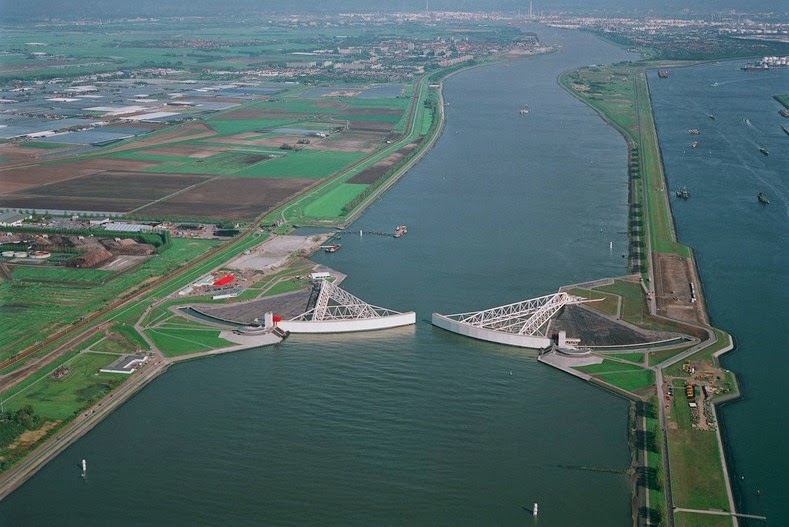
Delta Works consist of 13 ambitious projects designed to protect the Netherlands from flooding from the North Sea. Among the various barriers constructed two stand out: one is Maeslantkering and the other is Oosterscheldekering.
Maeslantkering
Maeslantkering is a movable storm surge barrier spanning the New Waterway (Nieuwe Waterweg), a canal that connects the river Rhine to the North Sea. The Maeslantkering acts as a final line of defense for Rotterdam against high levels of incoming seawater. It is one of largest moving structures on Earth, and the most impressive project of Delta Works.
The original plans for the Delta Works did not include this particular barrier because the authorities wanted to keep the port of Rotterdam, at that time the world's largest port, open for the Dutch economy. However, when it was found that the dykes that were originally planned were insufficient to protect 1.5 million people around Rotterdam, it was decided to build a moveable storm surge barrier.
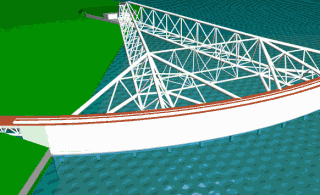
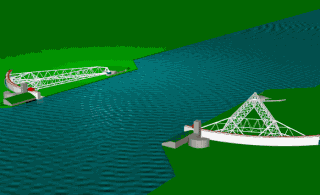
The Maeslantkering is a set of two swinging doors almost as long as the Eiffel tower and weighs about four times as much. It is the only storm surge barrier in the world with such large moveable parts. The storm surging doors have a length of 210 meters each, and 22 meters high, each having 237 meters long steel truss swivel with ball-socket movement on both the banks of the waterway.
Under normal circumstances, these doors are fully opened, providing a 360 meters wide passage for ships to pass. When a storm surge of 3 meters above normal sea level is anticipated, the doors starts to float and move towards each other closing the waterway. They are then flooded and the additional weight makes them sink and turns them into a massive barrier. The barrier is connected to a computer system which is linked to weather and sea level data, so their operation is fully automatic.
The Maeslantkering is expected to be closed once every ten years due to a storm surge. Since construction was finished in 1997, the doors were closed only once in November 2007. However, the barrier is closed for testing once a year, usually in the end of September or the beginning of October, just before the beginning of the storm season mid October.
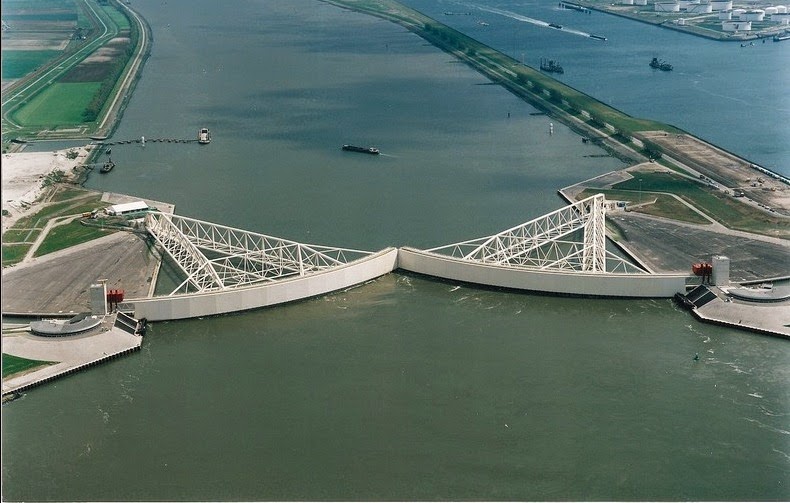
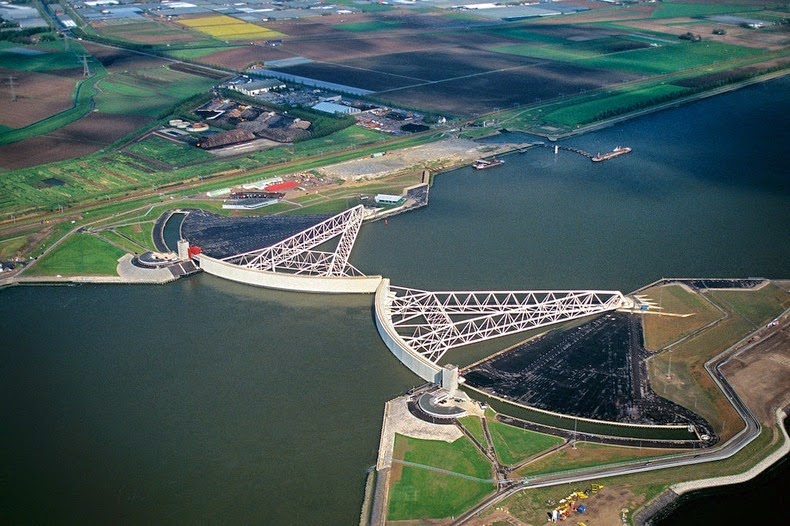
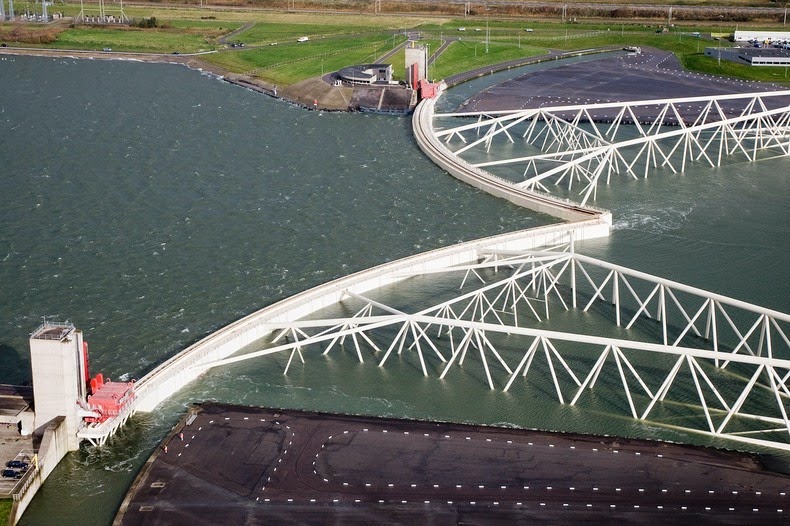
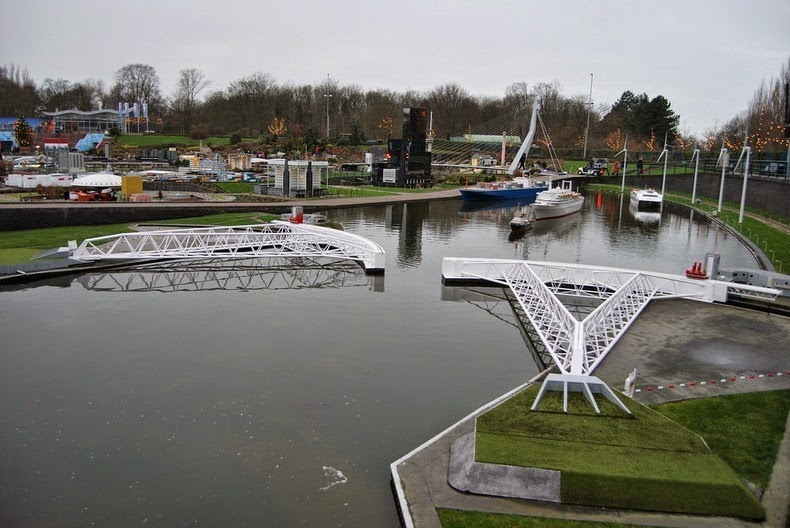
A working model of Maeslantkering is located on Madurodam miniature theme park in The Hague. Photo credit
Video of the Maeslantkering closing its gates.
Oosterscheldekering
The Oosterscheldekering (in English: Eastern Scheldt storm surge barrier) is another storm surge barrier located between the islands Schouwen-Duiveland and Noord-Beveland. It is the largest of the 13 Delta Works constructions, the most expensive and the most difficult to build.
The nine-kilometre-long Oosterscheldekering was initially designed, and partly built, as a closed dam, but after public protest, huge sluice-gate-type doors were installed in the remaining four kilometers. These doors are normally open, but can be closed under adverse weather conditions. In this way, the saltwater marine life behind the dam is preserved and fishing can continue, while the land behind the dam is safe from the water.
Since its opening in 1986, the dam has been closed twenty-five times due to water levels exceeding or being predicted to exceed the three meters. The dam is designed to last more than 200 years.
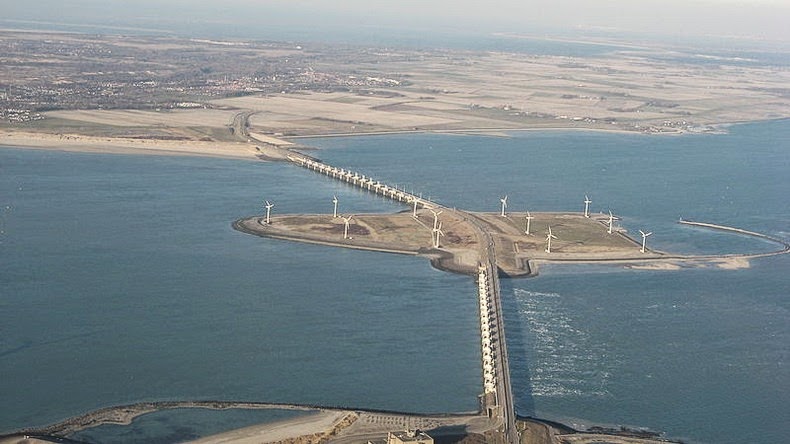

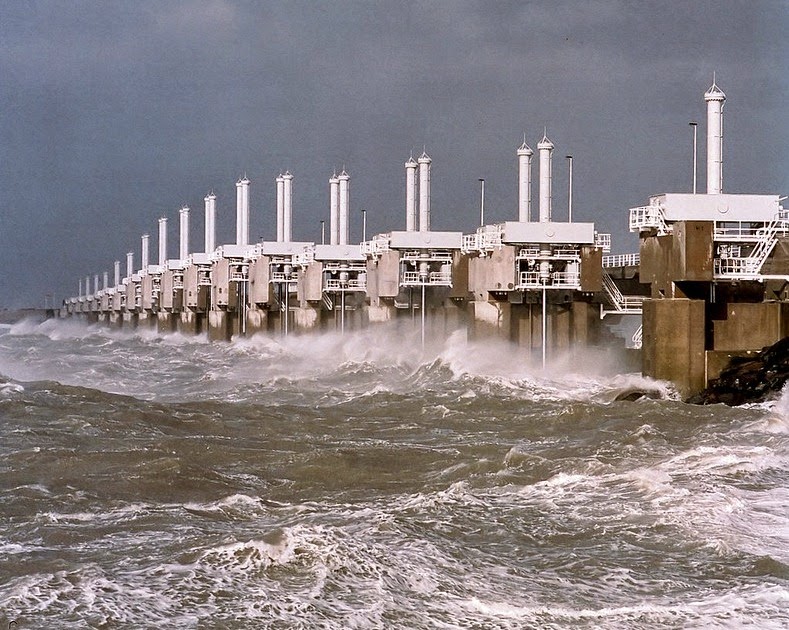
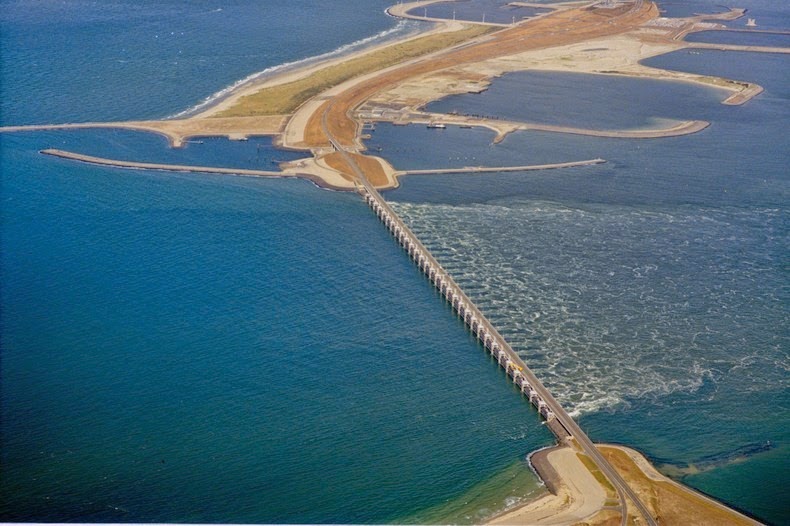
Sources: Delta Works / Wikipedia



Comments
Post a Comment